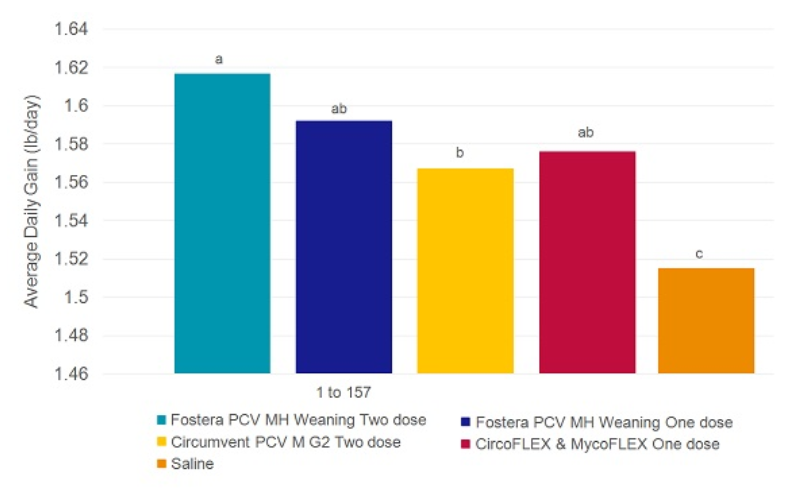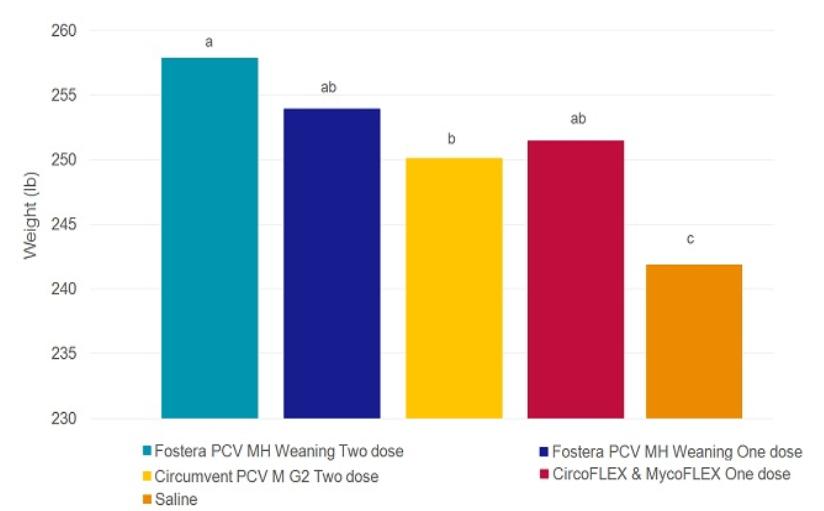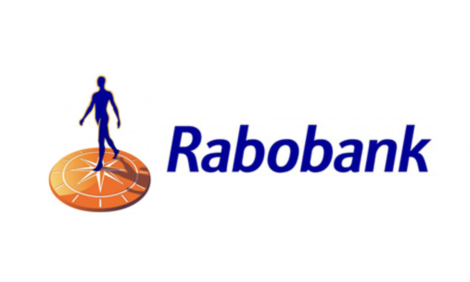



PCV MH vaccines provide equal protection in study, but lung lesions, ADG, final weight differ
Three porcine circovirus (PCV) vaccines compared in a recent study equally protected pigs against PCV type 2d and Mycoplasma hyopneumoniae, but there were some significant differences in gross lung-lesion scores, average daily gain (ADG) and final weight.For the study, over 500 commercial pigs were raised in a commercial-like environment at a Midwest contract research facility. The pigs had two prevalent influenza subtypes (H1N2, H3N2) and Streptococcus suis, not an uncommon field scenario, says Lucina Galina, DVM, PhD, director of swine technical services, Zoetis, which sponsored the study.
Investigators divided pigs into groups of 110. Treatment groups were mixed within pens so that pigs from each litter were represented in every group, which received one of five treatments per label directions as follows:
- 1-ml dose of Fostera® PCV MH at 3 and 5 weeks of age
- 2-ml dose of Fostera PCV MH at 3 weeks of age
- 1-ml dose of Circumvent® PCV-M G2 at 3 days of age and 3 weeks later
- 1-ml dose of Ingelvac CircoFLEX® plus 1-ml dose of Ingelvac MycoFLEX® at 3 weeks of age
- 1-ml dose of saline at 3 and 5 weeks of age (control group)
At 8 weeks of age, researchers challenged pigs with M. hyo. One week later, they challenged pigs with a high, intranasal and intramuscular dose of PCV2d, the most predominant PCV genotype based on sequencing of samples submitted to Iowa State’s Veterinary Diagnostic Laboratory.1 The PCV challenge, Galina notes, was far more severe than pigs are likely to encounter in the field.
Investigators tracking results did not know which treatment each group received, she continues. They found injection-site reactions were negligible, and there were also no significant differences among vaccine groups based on fecal sampling nor based on immunohistochemistry, an indicator of virus in lymph nodes.
Cycle-threshold values similar
Compared to unvaccinated, challenged controls, all three vaccines controlled PCV2d viremia well based on cycle-threshold (Ct) values from real-time polymerase chain reaction testing. In other words, there were no significant differences in Ct values among the vaccine groups, she says.
“Higher Ct values indicate less virus because it takes more cycles to find virus. Ct values were evaluated just before the PCV2d challenge at 61 days of age and again at 68, 75 and 79 (3 weeks post-challenge) days of age. Three weeks after the PCV2d challenge, the average Ct value in the unvaccinated, challenged control group was 28, a result pathologists would worry about, but in all vaccine groups, Ct values were over 35,” she explains.
Notable differences
At 12 weeks of age, investigators examined 24 pigs from each group for gross lung lesions. Pigs in both Fostera PCV MH groups and the Circumvent PCV-M G2 group had significantly (p < 0.05) lower lesion scores than the CircoFLEX plus MycoFLEX group, which had the highest percentage of lung-lesion scores of all study groups, including controls.
Of pigs remaining in the study, those in the Fostera PCV MH group had significantly better ADG (Figure 1) compared to the Circumvent PCV-M G2 group. By the last day of the study, they weighed over 257 pounds — 7.78 pounds more compared to the Circumvent PCV-M G2 group and nearly 16 pounds more than the unvaccinated, challenged control group (Figure 2). These differences were statistically significant, Galina says.
The next best final average weight and ADG were among pigs in the one-dose Fostera PCV MH group. These results were not statistically significant but were numerically better than results in the Circumvent PCV-M G2 and CircoFLEX plus MycoFLEX groups, she says.
Figure 1. Average daily gain from day 3 to 160 days of age. Note: Values with the same letter are not significantly different (p < 0.05)
Figure 2. Final average individual pig weights at 160 days of age. Note: Values with the same letter are not significantly different (p < 0.05)
The weight differences started showing up on study day 51, Galina says, noting this was before challenge with M. hyo or PCV2d. She can’t explain why pigs in the two-dose Fostera PCV MH group had such better gain than the Circumvent PCV-M G2 group but speculated it could be partly due to the efficacy of M. hyo control provided by the vaccine in the finishing period, which is when M. hyo tends to cause problems in growers.
There are other possible reasons, she says. “The Fostera PCV MH vaccine has evolved considerably over the past several years. In 2011, the vaccine was reformulated. Since then, the adjuvant was changed to MetaStim, which is gentle but enables pigs to mount an immune response including a high, cell-mediated and antibody response.2 Most recently, the PCV antigen was increased. Some or all of these factors might explain weight gain in pigs that received this vaccine,” she says.
1 Xiao C-T, et al. PCV2d-2 is the predominant type of PCV2 DNA in pig samples collected in the US during 2014-2016. Vet Microbiol. 2016 Dec;197:72-77.
2 Seo HW, et al. Comparative analyses of humoral and cell-mediated immune responses upon vaccination with different commercially available single-dose porcine circovirus type 2 vaccines. Res Vet Sci. 2014;97:38-42.











